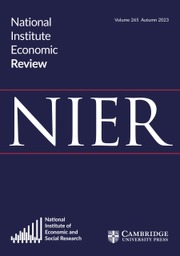Article contents
A Reconsideration of the Optimum Currency Area Approach: The Role of External Shocks and Labour Mobility
Published online by Cambridge University Press: 26 March 2020
Abstract
The external shocks emphasised by the standard Optimum Currency Area approach (i.e. shocks to exports) have surprisingly little influence on employment and unemployment in most member countries of the European Union (EU) whether or not exchange rates are fixed. Short-run exchange-rate variability (but not the level of the exchange rate) seems to have a negative impact on employment.
It is often claimed that a high degree of international labour mobility is a condition for a monetary union. However, what matters for the Optimum Currency Area approach is the difference between inter-regional and inter-national labour mobil ity and not the level of the latter. Recent data show that international labour mobility in Europe is of the same order of magnitude as inter-regional labour mobility within member countries and that, the latter seems to be influenced by the housing market. EMU is thus unlikely to significantly worsen the problems that arise through the low mobility of labour in Europe.
- Type
- Articles
- Information
- Copyright
- Copyright © 1996 National Institute of Economic and Social Research
Footnotes
Centre for European Policy Studies (CEPS). Correspondence should be addressed to the author at CEPS, Brussels. A first draft of this paper was completed when the author was visiting professor at the Johann Wolfgang Goethe Universitat Frankfurt am Main. Many thanks to Erik Jones for comments, discussions and excellent research assistance.
References
- 17
- Cited by


